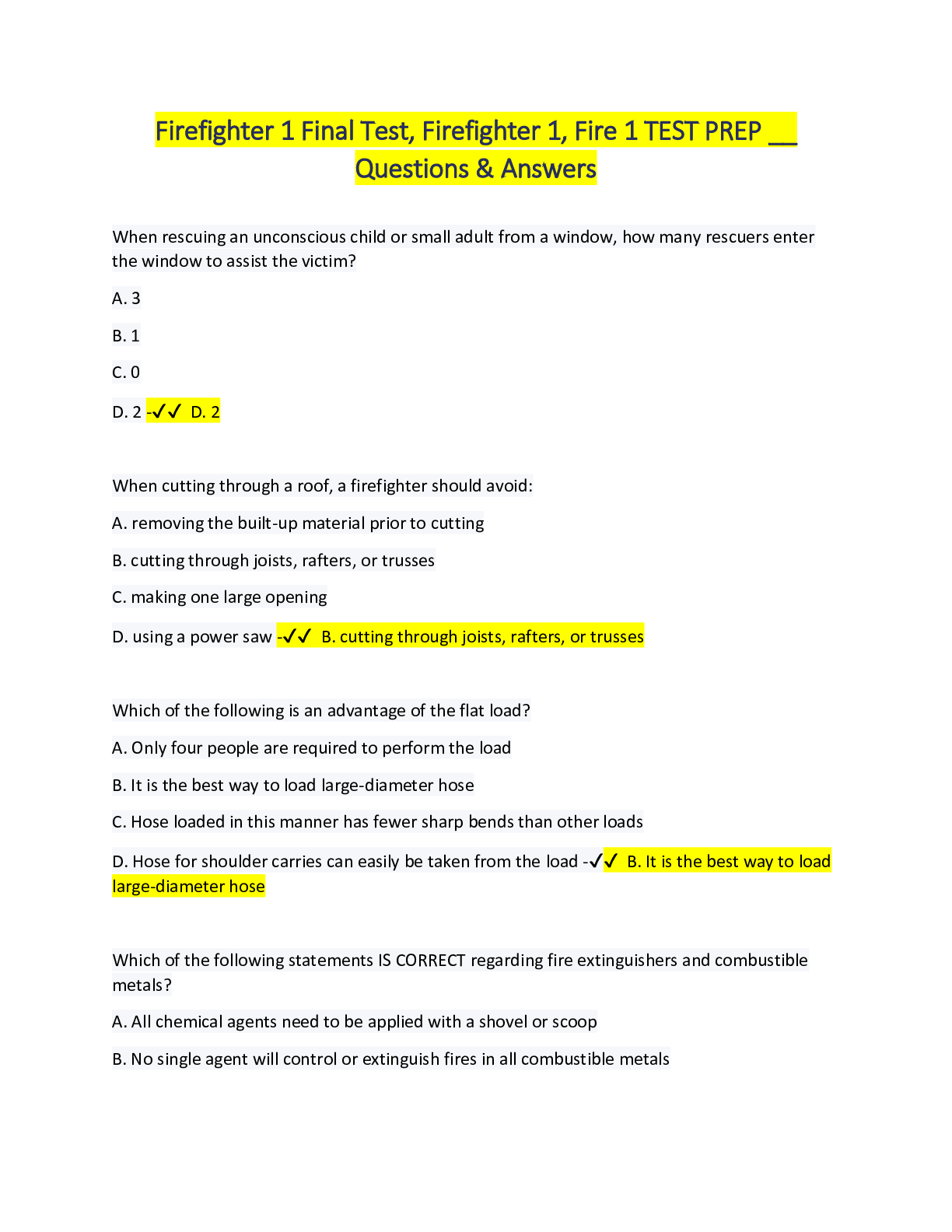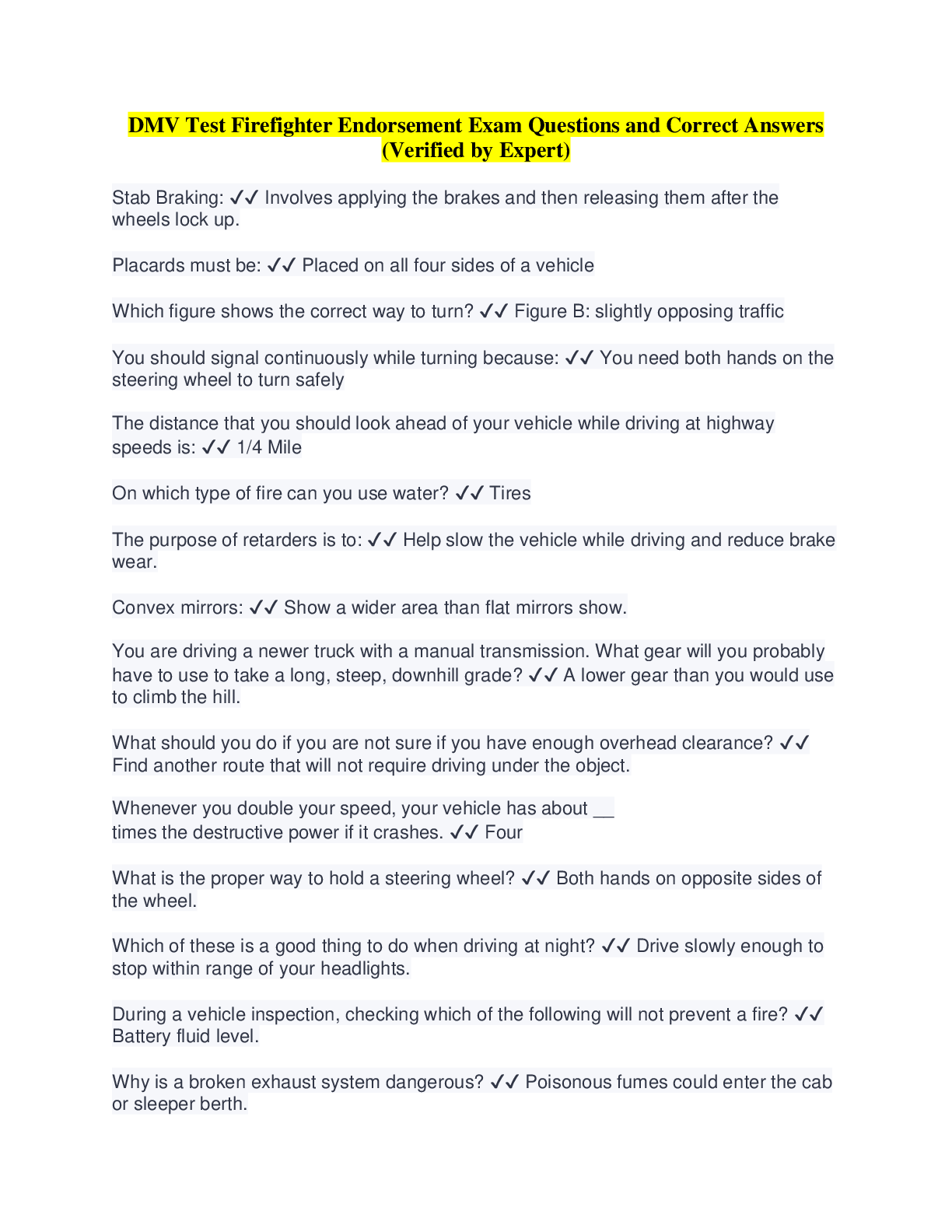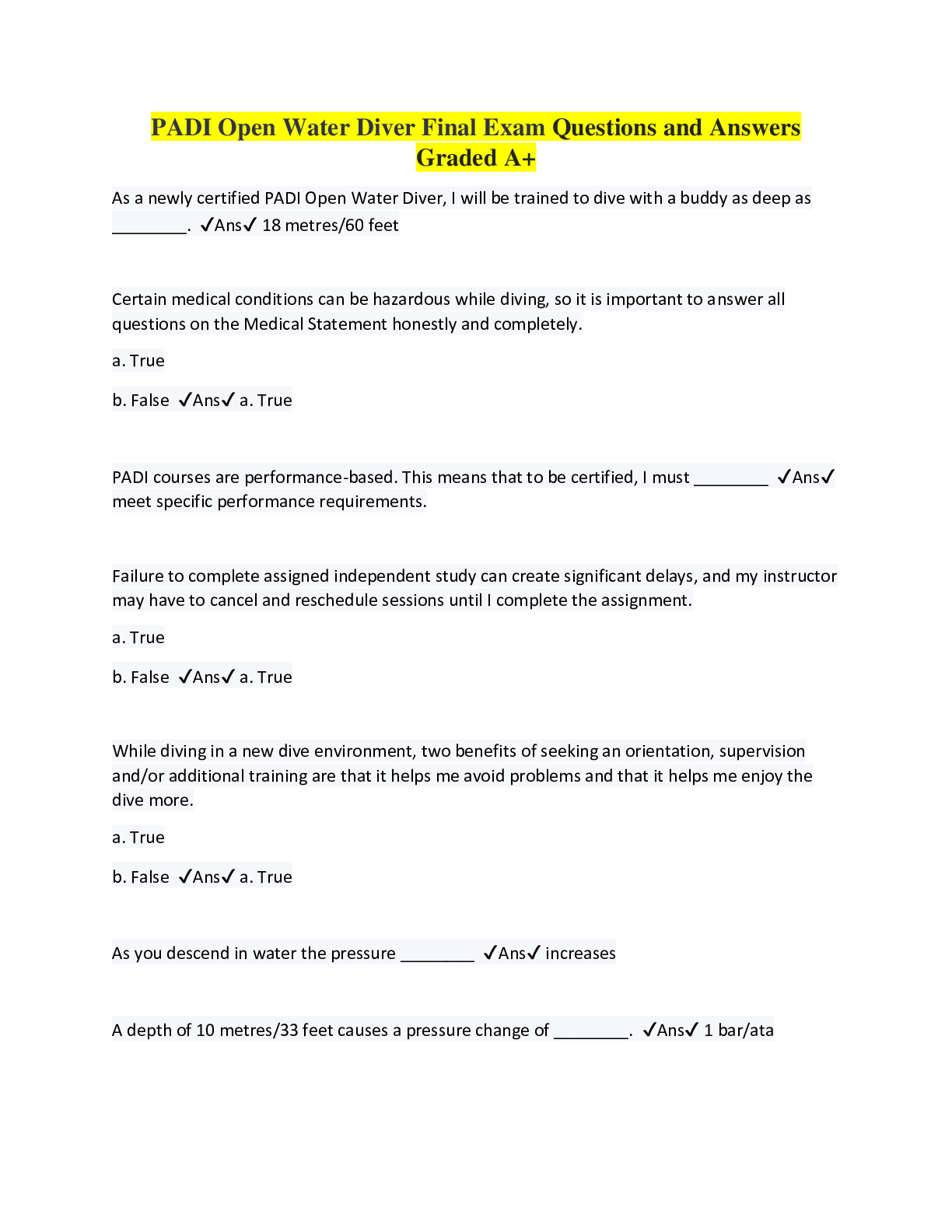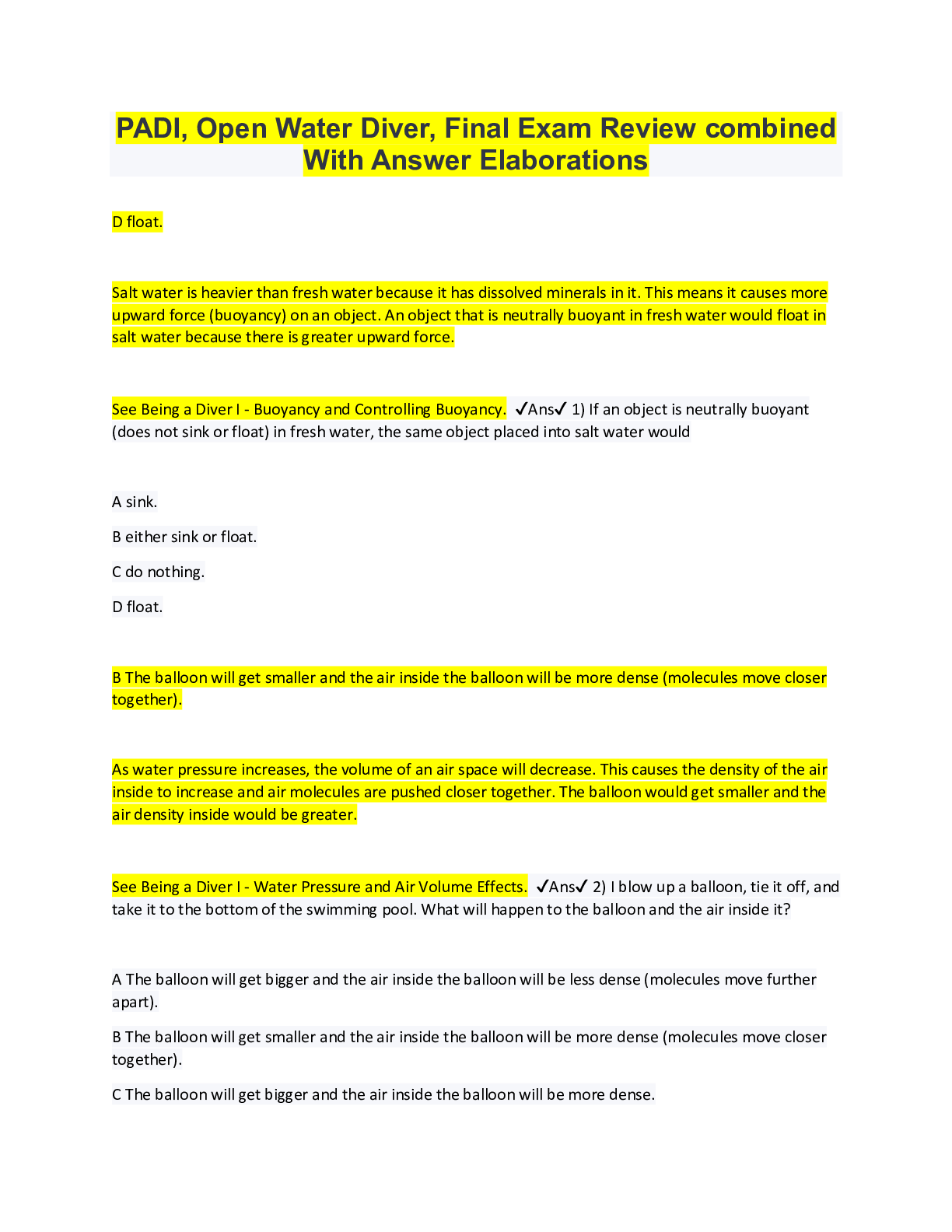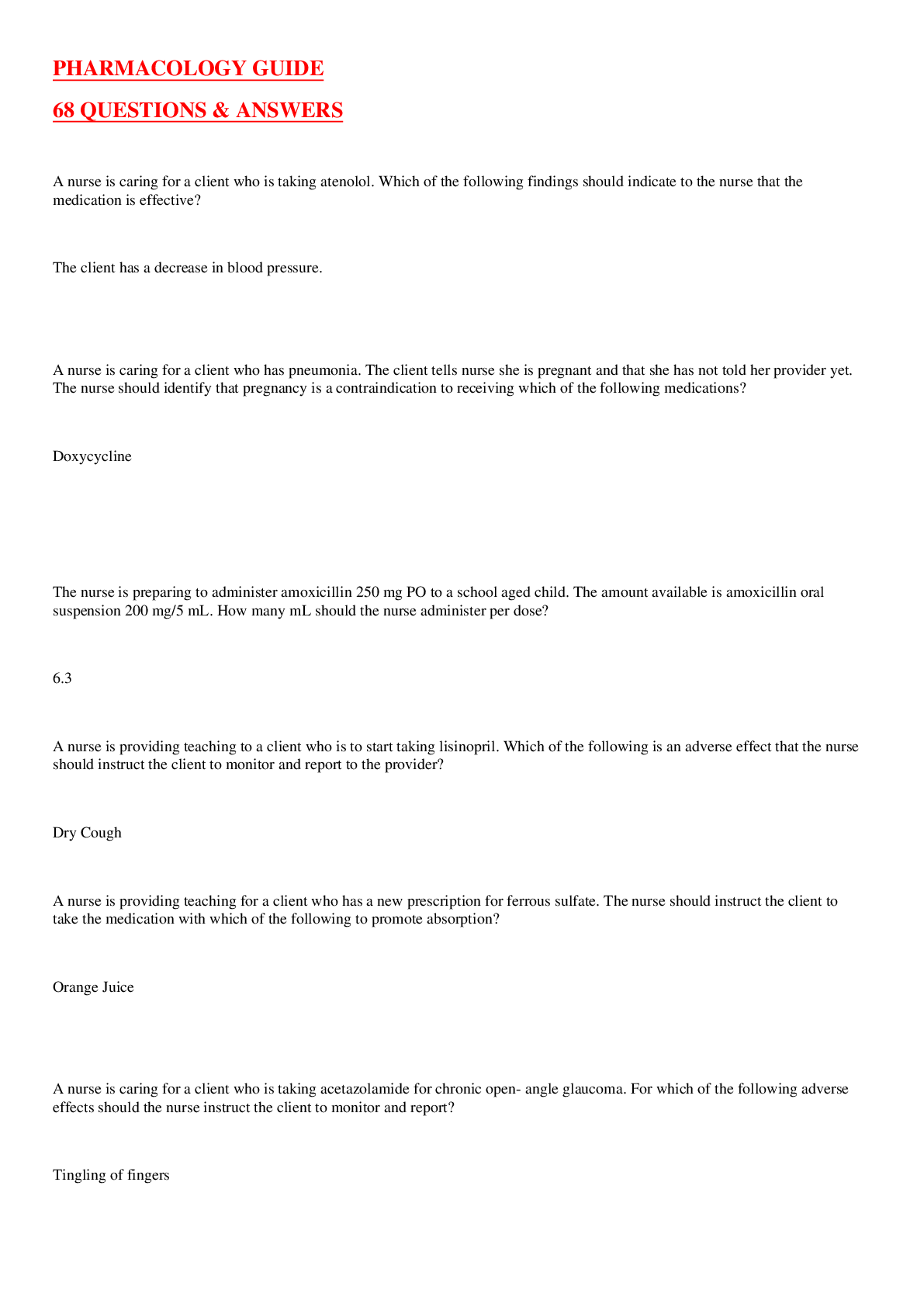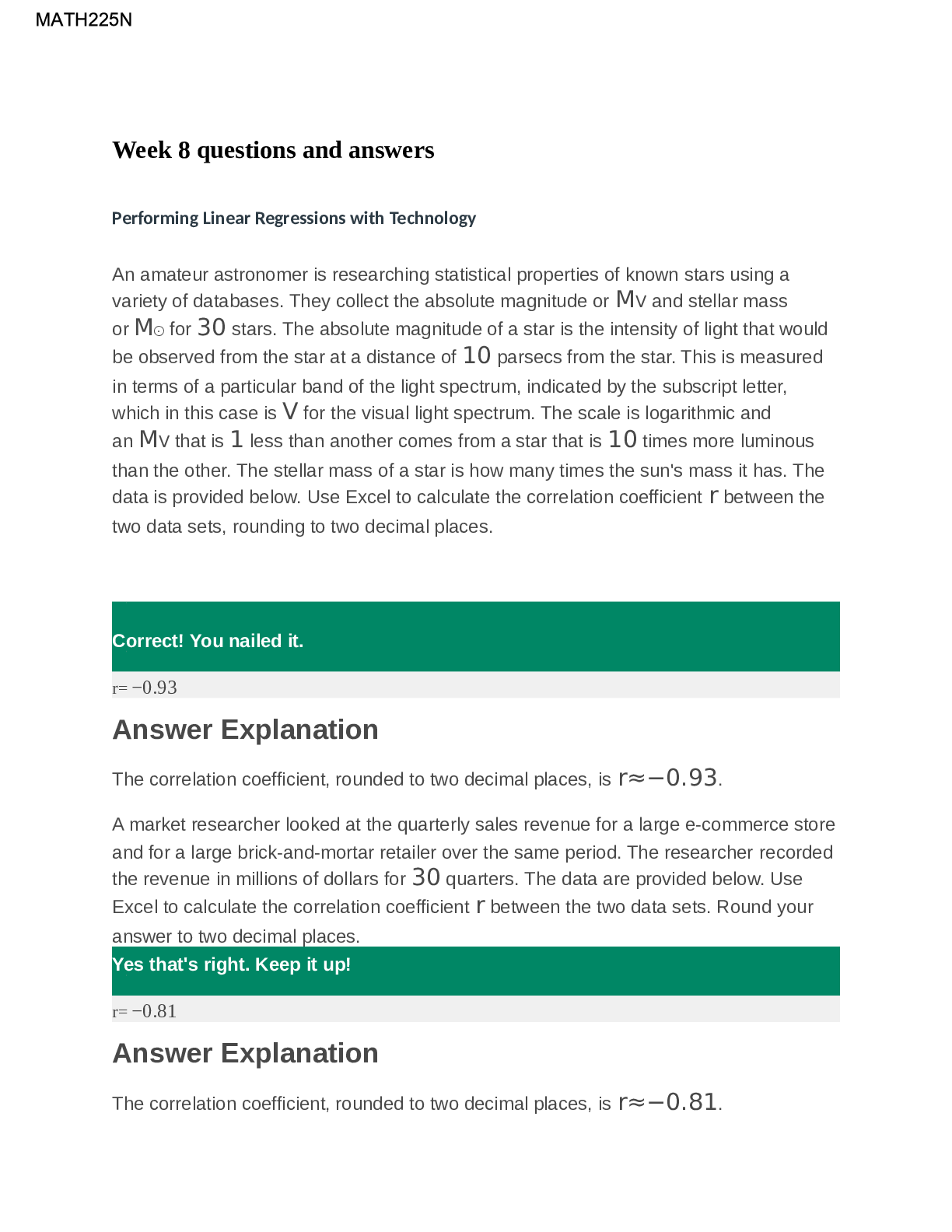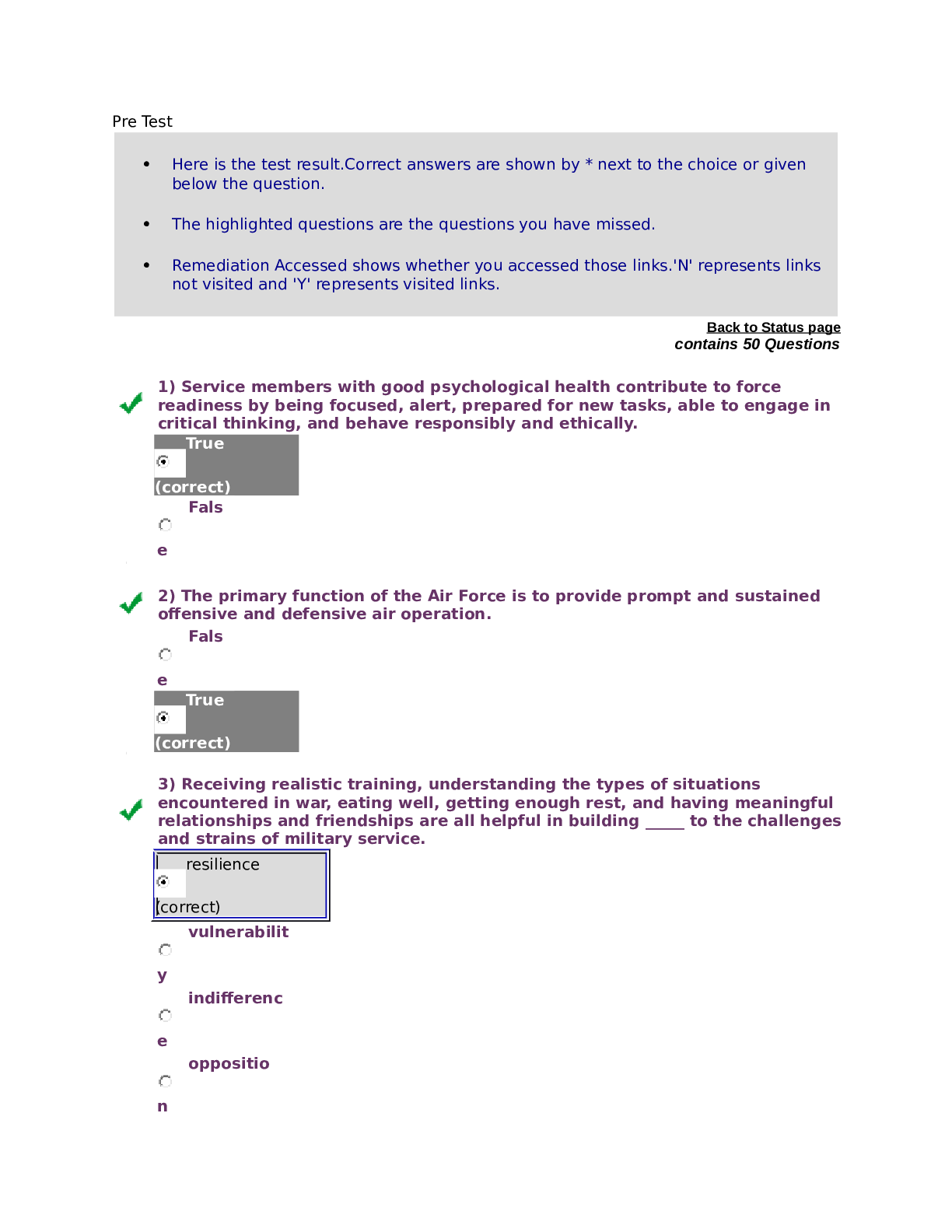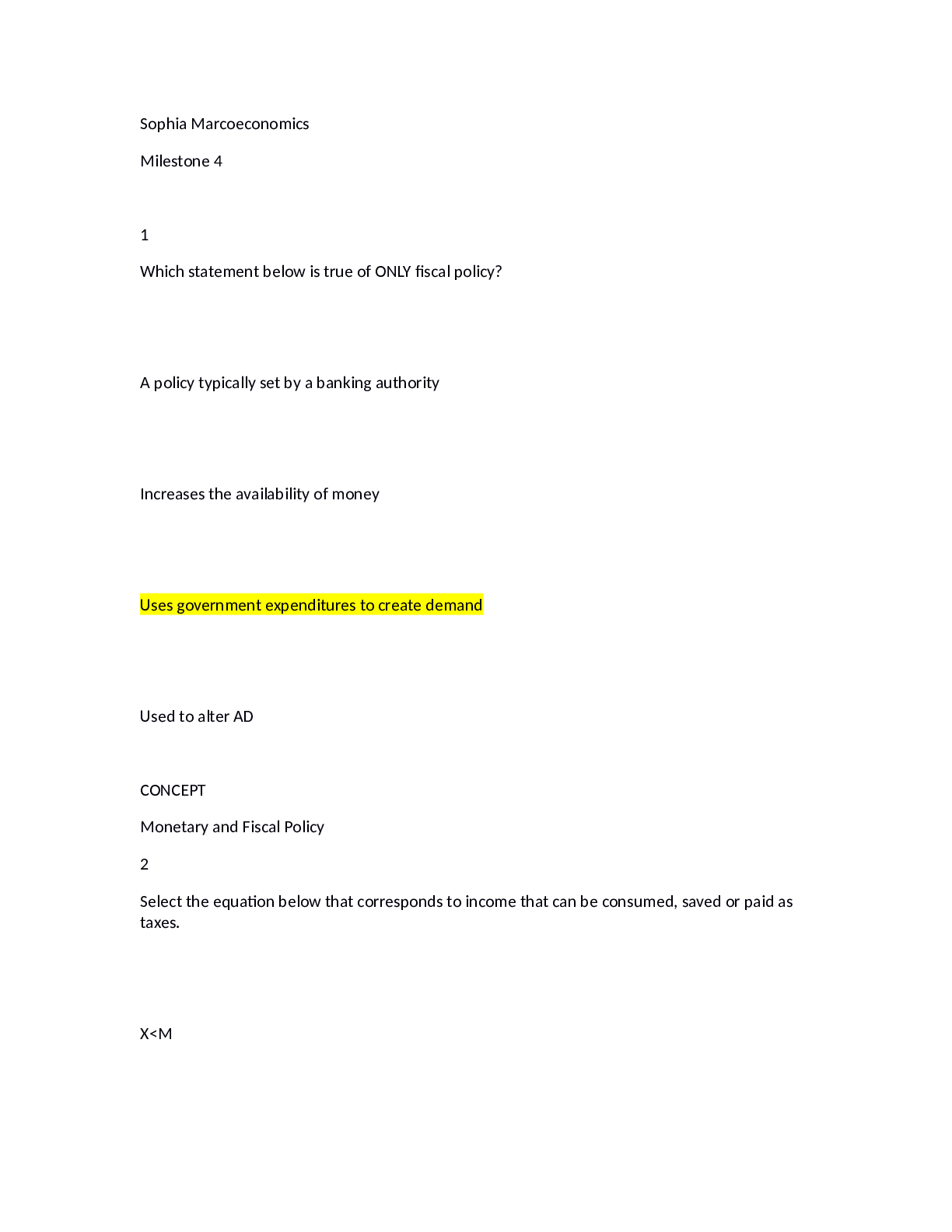Research Methods > QUESTIONS & ANSWERS > CITI Training, Modules 1-24 (Biomedical Research) Questions and Answers Latest 2022 (All)
CITI Training, Modules 1-24 (Biomedical Research) Questions and Answers Latest 2022
Document Content and Description Below
CITI Training, Modules 1-24 (Biomedical Research) Questions and Answers Latest 2022 The Belmont Report's principle of respect for persons incorporates at least two ethical convictions: first, that... individuals should be treated as autonomous agents, and second, that: A. Persons with diminished autonomy should only participate in no more than minimal risk research. B. Persons with diminished autonomy should be excluded from research. C. Persons with diminished autonomy are entitled to protection. D. Persons involved in research cannot financially benefit. ✔✔C. Persons with diminished autonomy are entitled to protection. Which of the following is an example of how the principle of beneficence can be applied to a study employing human subjects? A. Ensuring that persons with diminished autonomy are protected. B. Providing detailed information about the study and obtaining the subject's consent to participate. C. Determining that the study has a maximization of benefits and a minimization of risks. D. Ensuring that the selection of subjects includes people from all segments of the population. ✔✔C. Determining that the study has a maximization of benefits and a minimization of risks. Which of the following are the three principles discussed in the Belmont Report? A. IRB Review, Federal Regulations, Declaration of Helsinki B. Privacy, Confidentiality, Equitable Selection of Subjects C. Informed Consent, Institutional Assurance, Researcher Responsibility D. Respect for Persons, Beneficence, Justice ✔✔D. Respect for Persons, Beneficence, Justice When an IRB is reviewing a research study and they are considering if a potential subject population is vulnerable, they should consider:A. Are there adequate resources to conduct the study? B. Is there a power differential between researchers and subjects? C. Has the researcher completed required training? D. Are the research procedures greater than minimal risk of harm? ✔✔B. Is there a power differential between researchers and subjects? Which is an example of a situation where deferential vulnerability might be a factor? A. An army medical officer recruiting subjects among lower ranks B. A college professor recruiting among their students C. A physician recruiting patients to be subjects D. An employer recruiting among persons who directly report to them ✔✔C. A physician recruiting patients to be subjects In considering NBAC's analytic approach, an otherwise competent person who is acutely ill might be considered at especially high risk of harm for: A. Economic vulnerability B. Situational cognitive vulnerability C. Capacity-related cognitive vulnerability D. Communicative vulnerability ✔✔B. Situational cognitive vulnerability Identify the following groups that are protected in the federal regulations (45 CFR 46), specifically in Subparts B, C, and D with additional protections: A. Pregnant women, prisoners, and mentally disabled B. Children, prisoners, and terminally ill C. Prisoners, children, and elderly D. Pregnant women, prisoners, children ✔✔D. Pregnant women, prisoners, children The NBAC looks at characteristics individuals might have that would prevent them from being able to provide voluntary informed consent. The traits may be thought of as falling into six broad areas: cognitive or communicative, institutional, deferential, medical, economic, and social.Prospective research subjects who are not able to comprehend information, deliberate, and make decisions about participation in a proposed research study have a: A. Institutional vulnerability B. Cognitive or communicative vulnerability C. Physical vulnerability D. Economic or social vulnerability ✔✔B. Cognitive or communicative vulnerability The use of prisoners in research is a concern under the Belmont principle of Justice because: A. Prisoners are less educated that the general population and have difficulty understanding research B. Prisoners may not be used to conduct research that only benefits the larger society C. Prisoners are not a representative sample of the general population D. Prisoners are not free to say no ✔✔B. Prisoners may not be used to conduct research that only benefits the larger society Which of the following is included in the Nuremberg Code: A. Additional protection for vulnerable subjects B. Equitable selection of subjects C. Confidentiality of data D. Voluntary consent ✔✔D. Voluntary consent Which of the following brought increased public attention to the problems with the IRB system? A. 1983 Presidential Commission Report B. HHS Inspector General Report of 1998 C. "Shut Downs" by OHRP D. Death of Research Subject (Jesse Gelsinger) ✔✔D. Death of Research Subject (Jesse Gelsinger) Informed consent is considered an application of which Belmont principle? A. Non-maleficence B. Justice C. BeneficenceD. Respect for Persons ✔✔D. Respect for Persons [Show More]
Last updated: 2 years ago
Preview 1 out of 41 pages
.png)
Buy this document to get the full access instantly
Instant Download Access after purchase
Buy NowInstant download
We Accept:

Reviews( 0 )
$8.00
Can't find what you want? Try our AI powered Search
Document information
Connected school, study & course
About the document
Uploaded On
Dec 08, 2022
Number of pages
41
Written in
Additional information
This document has been written for:
Uploaded
Dec 08, 2022
Downloads
0
Views
168
.png)


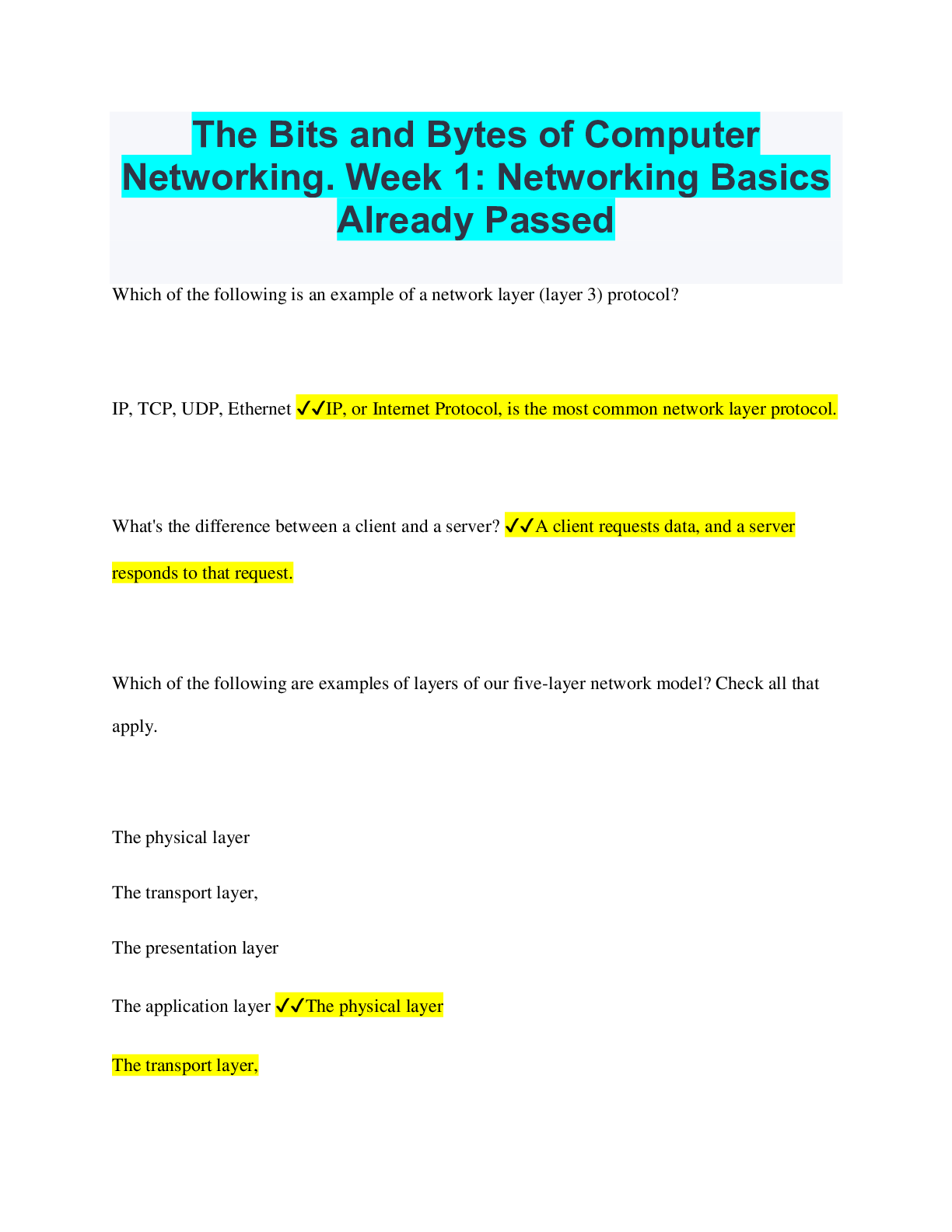
 Answered 2023.png)


